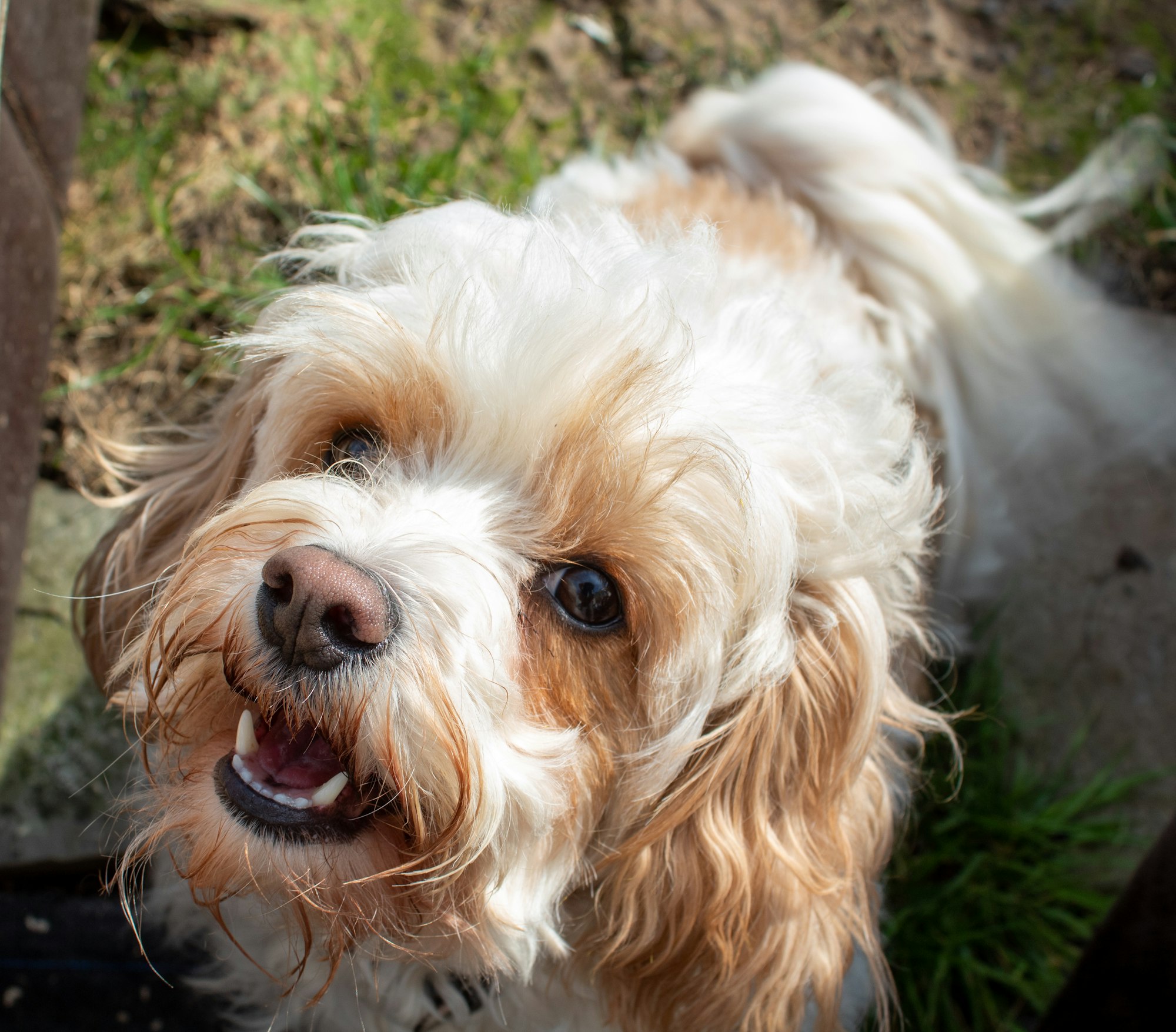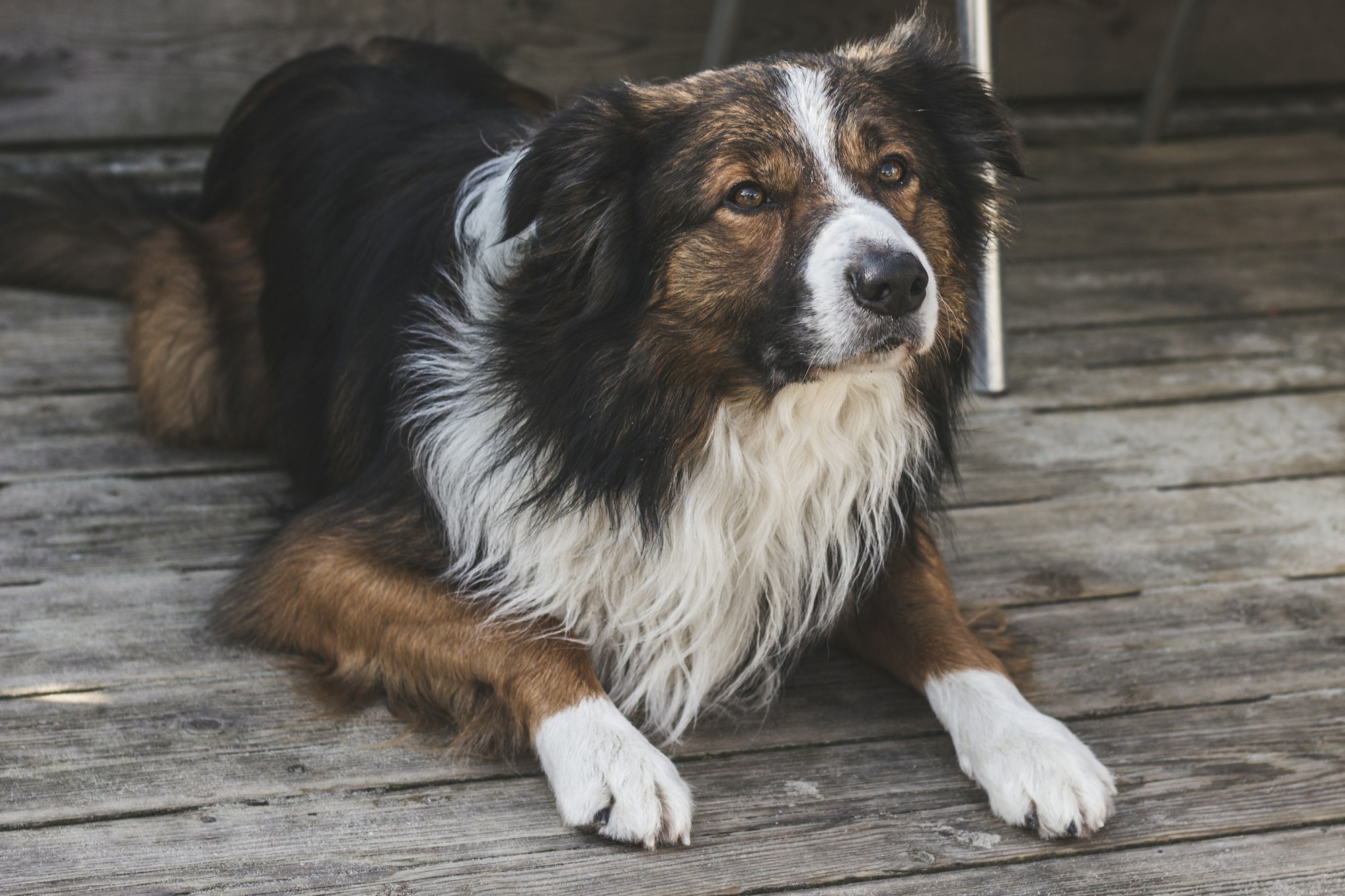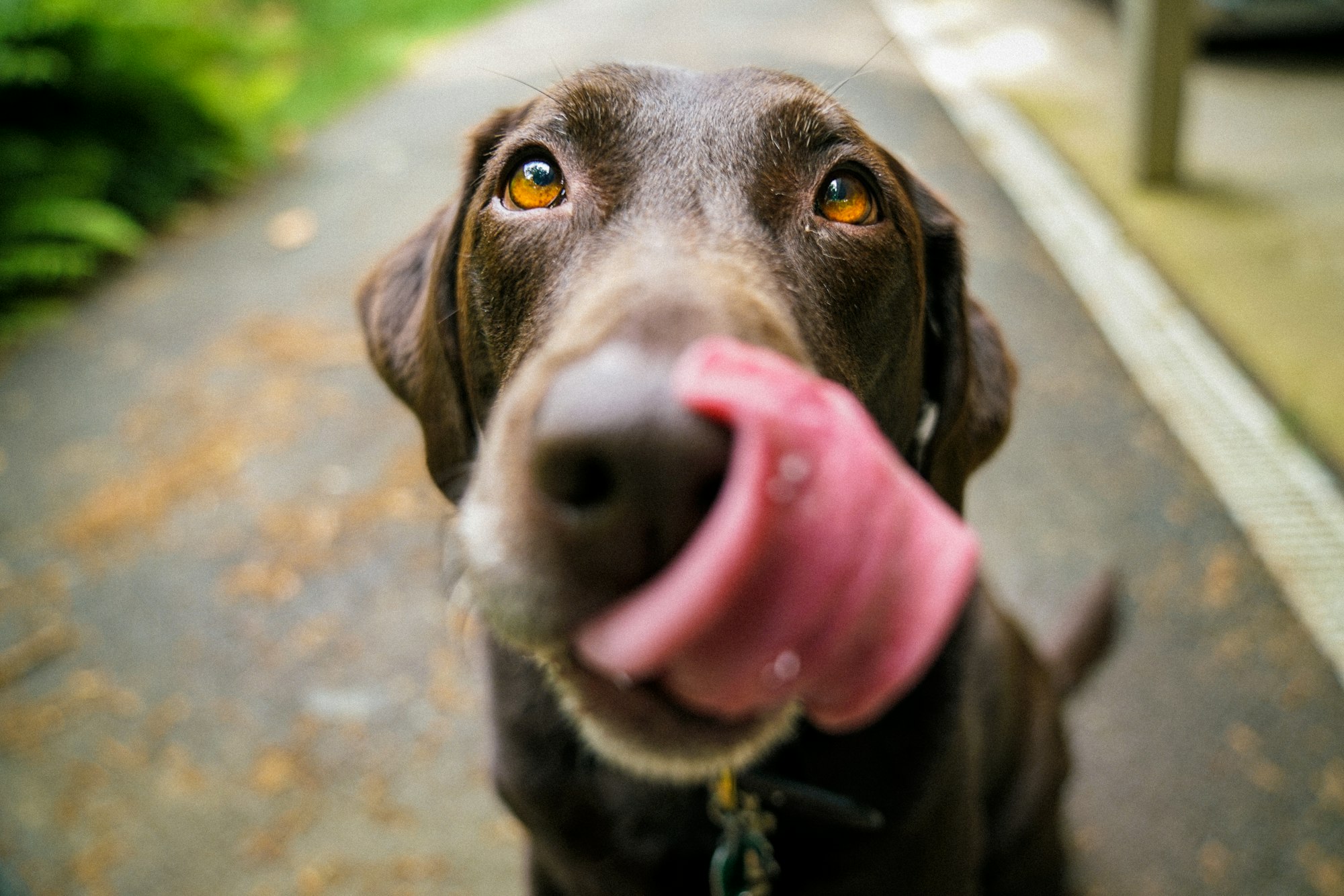The charm of dogs lies in their diverse breeds and distinctive features, each offering a unique appeal. Among these fascinating breeds is the bearded dog, an adorable and charismatic companion that captures the hearts of dog lovers worldwide. Here, we will explore the world of bearded dogs, shedding light on their characteristics, temperament, grooming needs, and why they make excellent family pets.
What is a Bearded Dog?

A bearded dog refers to a specific group of dog breeds that possess a distinctive facial feature: a long, bushy beard. This tuft of hair that adorns their chin area sets them apart from other canines, giving them a charming and distinguished appearance. Bearded dogs are known for their friendly and affectionate nature, making them popular choices for families and individuals seeking loyal companions.
Breeds of Bearded Dogs
When it comes to bearded dogs, several breeds exhibit charming facial hair and delightful personality that make them so beloved. Each breed has its unique characteristics and traits that set them apart. Let's explore some of the popular breeds of bearded dogs:
1. Bearded Collie: The Bearded Collie, also known as the "Beardie," is a medium-sized herding dog breed. They have a shaggy double coat with a distinctive beard and eyebrows. Known for their intelligence and agility, Bearded Collies excel in herding and various dog sports.
2. Schnauzer: The Schnauzer is a versatile breed that comes in three sizes: Giant, Standard, and Miniature. Miniature Schnauzers are often recognized for their beard and bushy eyebrows. They are lively, and friendly, and make excellent companions and family pets.
3. Portuguese Water Dog: The Portuguese Water Dog is a medium to large-sized breed with a curly or wavy coat. While their beard may not be as pronounced as in other breeds, they still possess charming facial hair. They are intelligent, energetic, and have a strong affinity for water activities.
4. Airedale Terrier: The Airedale Terrier, often referred to as the "King of Terriers," is a large and versatile breed. They have a wiry and dense coat with a distinctive beard and mustache. Airedales are known for their courage, loyalty, and versatility in various roles, including hunting, working, and as family pets.
5. Briard: The Briard is a large and noble herding breed originating from France. They have a long, thick, and wavy coat with a prominent beard. Briards are intelligent and protective and excel in herding and obedience. They are known for their loyalty and make excellent family companions.
6. Scottish Terrier: The Scottish Terrier, often referred to as the "Scottie," is a small, sturdy, and independent breed. They have wiry coat with a distinctive beard and eyebrows. Scotties are known for their dignified and feisty nature. Despite their small size, they have a bold and confident personality.
7. Irish Terrier: The Irish Terrier is a medium-sized terrier breed known for its fiery red coat. They have a wiry and dense coat with a distinct beard and bushy eyebrows. Irish Terriers are spirited, and courageous, and make devoted companions and watchful family pets.
These are just a few examples of bearded dog breeds, each with unique characteristics and qualities. Whichever breed you choose, you can be sure to have a loyal and loving companion with an adorable beard that will capture your heart.
Bearded Dogs Physical Characteristics

Bearded dogs possess distinctive physical characteristics that contribute to their unique charm and appeal. From their facial hair to their overall build, these traits make them easily recognizable and adored by dog enthusiasts. Let's delve into the physical characteristics commonly seen in bearded dogs:
1. Facial Hair: The most notable feature of bearded dogs is their facial hair. They sport a prominent beard that hangs from their chin, often accompanied by bushy eyebrows. This facial hair gives them a wise and distinguished look, adding to their overall charm.
2. Coat: Bearded dogs typically have a double coat, consisting of a dense, weather-resistant outer coat and a soft undercoat. The texture and length of the coat can vary between breeds. Some have wiry and coarse fur, while others have wavy or curly hair. The coat may come in different colors, including black, brown, gray, or a combination of these hues.
3. Size: Bearded dogs come in different sizes, ranging from small to large breeds. The size of a bearded dog can influence their overall appearance and physicality. Smaller breeds, like the Miniature Schnauzer, have a compact and sturdy build, while larger breeds, such as the Bearded Collie, have a more substantial and muscular frame.
4. Muscular Build: Bearded dogs often exhibit a well-muscled physique. Their bodies are strong and agile, allowing them to excel in various activities, such as herding, agility, or water sports. Their muscular build not only contributes to their physical strength but also adds to their overall athleticism.
5. Head and Expression: Bearded dogs typically have well-proportioned head with distinct facial features. Their heads may vary in shape and size depending on the breed. They often possess expressive eyes that convey intelligence and curiosity. The combination of their eyes, beard, and eyebrows gives them a unique and captivating expression.
6. Ears: The ears of bearded dogs can differ between breeds. Some breeds, like the Schnauzer, have small, folded ears that lie close to the head. Others, such as the Bearded Collie, have medium-sized ears that may be partially covered by their long hair. The shape and position of the ears contribute to the overall appearance of each breed.
7. Tail: The tail of bearded dogs varies in length and shape. Some breeds have naturally long, flowing tails that may be carried high when alert or in motion. Others have docked tails, meaning the tail has been surgically shortened. The tail, whether long or docked, adds to the overall balance and elegance of each breed.
These physical characteristics collectively create the distinct look and charm of bearded dogs. From their facial hair to their overall build, they embody a captivating and lovable appearance that sets them apart from other breeds. Whether small or large, each bearded dog breed showcases its unique features while sharing the endearing trait of a charming beard.

Temperament and Personality Traits
Bearded dogs are not only known for their charming appearance but also for their delightful temperament and personality traits. These dogs possess qualities that make them wonderful companions and cherished family pets. Let's explore some of the common temperament and personality traits found in bearded dogs:
1. Friendly and Affectionate: Bearded dogs are often friendly and affectionate towards their human family members. They form strong bonds and enjoy being a part of the family activities. Their loving nature makes them excellent companions for individuals of all ages.
2. Intelligent and Alert: Bearded dogs are generally intelligent and quick to learn. They exhibit an alertness that contributes to their ability to excel in various tasks and training exercises. Their sharp minds make them adaptable and responsive to training methods.
3. Loyal and Protective: Bearded dogs have a natural instinct to protect their loved ones. They are loyal and dedicated, often exhibiting a sense of guardianship. Their protective nature can make them excellent watchdogs, alerting their owners to any potential threats.
4. Playful and Energetic: Many bearded dogs possess a playful and energetic nature. They enjoy interactive games, playtime, and outdoor activities. Regular exercise and mental stimulation are crucial for their well-being and can help prevent boredom-related behaviors.
5. Confident and Independent: Bearded dogs often have a confident and independent streak. While they enjoy spending time with their human companions, they also have an innate self-assuredness that allows them to be content in their own company. This independence can manifest as a strong sense of individuality.
6. Good with Children and Other Pets: Bearded dogs are generally good with children and can make wonderful family pets. They are patient and tolerant, making them suitable companions for households with young children. With proper socialization, they can also get along well with other pets in the family.
7. Alert and Vocal: Bearded dogs are known to be alert and attentive. They may have a tendency to bark or vocalize to communicate with their owners or to alert them of potential threats or changes in their environment. Proper training and socialization can help manage and control excessive barking.
These temperament and personality traits contribute to the overall charm and appeal of bearded dogs. Whether it's their friendly and affectionate nature, their intelligence, or their protective instincts, these traits make them beloved companions for dog lovers around the world.
Bearded Dogs Grooming and Maintenance Tips

Maintaining the well-groomed appearance of bearded dogs requires regular grooming and maintenance. Their unique coat and facial hair require specific care to keep them clean, healthy, and tangle-free. Here are some essential grooming considerations for bearded dogs:
1. Brushing: Bearded dogs often have long or wiry coats that require regular brushing to prevent matting and tangling. Brushing should be done at least a few times a week, using a slicker brush or a comb suitable for their coat type. This helps remove loose hair and prevents the formation of knots.
2. Beard Care: The beard of bearded dogs requires special attention. It can easily become dirty or stained from food or water. Regular cleaning with a damp cloth or dog-safe wipes can help keep the beard clean and fresh. Trimming may also be necessary to maintain its shape and prevent it from becoming overly long or unruly.
3. Bathing: Bearded dogs should be bathed regularly using dog-specific shampoo. The frequency of bathing depends on the breed and the individual dog's needs. Overbathing can strip their coat of natural oils, so it's critical to find a balance that keeps them clean without causing dryness or skin irritation.
4. Nail Trimming: Regular nail trimming is essential to keep the nails at a proper length. Long nails can be uncomfortable for dogs and may cause issues with their gait. Nail trimming should be done carefully using appropriate dog nail clippers or with the help of a professional groomer.
5. Ear Cleaning: Bearded dogs, especially those with floppy or folded ears, are prone to ear infections. Regular ear cleaning using a dog-specific ear cleaner can help prevent the buildup of wax and debris. It's important to be gentle and avoid inserting anything deep into the ear canal to prevent injury.
6. Dental Care: Dental hygiene is crucial for the overall health of bearded dogs. Regular brushing with a dog-friendly toothbrush and toothpaste can help prevent dental issues such as tartar buildup and gum disease. Dental treats and toys designed to promote oral health can also be beneficial.
7. Professional Grooming: Some bearded dog breeds may require professional grooming services, especially those with complex coats or specific grooming styles. Professional groomers can provide breed-specific trims, as well as additional services like coat shaping, paw pad trimming, and sanitary grooming.
By following a regular grooming routine and providing proper care, bearded dogs can maintain their healthy and well-groomed appearance. Grooming sessions also serve as an opportunity for bonding and creating a positive association with the grooming process.
Training and Exercise
Training and exercise are vital for the well-being and overall development of bearded dogs. These intelligent and active breeds require mental stimulation and physical activity to channel their energy and maintain a balanced lifestyle. Here are some key aspects of training and exercise for bearded dogs:
1. Socialization: Early socialization is crucial for bearded dogs. It helps them become well-adjusted and confident around people, other animals, and various environments. Exposing them to different sights, sounds, and experiences at a young age helps prevent fearfulness or separation anxiety later in life.
2. Basic Obedience Training: Bearded dogs respond well to positive reinforcement-based training methods. Teaching them basic obedience commands such as sit, stay, come, and leash manners is significant for their safety and allows for better control in various situations. Consistency, patience, and rewards are key during training sessions.
3. Advanced Training: Many bearded dogs excel in advanced training activities such as agility, herding, or scent work. These activities provide mental and physical stimulation while tapping into their natural abilities and instincts. Advanced training can also enhance the bond between the dog and their owner.
4. Exercise Requirements: Bearded dogs have varying exercise requirements based on their breed and individual energy levels. Regular daily exercise, such as brisk walks, jogging, or playtime in a securely fenced area, is necessary to keep them physically fit and mentally stimulated. Adequate exercise helps prevent behavioral issues that may arise from pent-up energy.
5. Mental Stimulation: In addition to physical exercise, bearded dogs benefit from mental stimulation. Engaging them in activities that challenge their problem-solving skills, such as puzzle toys, interactive feeding toys, or training sessions, helps prevent boredom and promotes their overall mental well-being.
6. Positive Reinforcement: Positive reinforcement training methods, which involve rewarding desired behaviors rather than using punishment or coercion, work best for bearded dogs. They respond well to praise, treats, and play as rewards for good behavior, fostering a cooperative and positive training experience.
7. Consistency and Patience: Consistency and patience are vital when training bearded dogs. They thrive in an environment where rules and expectations are clear and consistent. Training should be approached with patience and understanding, allowing for gradual progress and focusing on positive reinforcement.
By providing consistent training, regular exercise, and mental stimulation, bearded dogs can lead fulfilling lives and be well-behaved companions. Training not only helps them become obedient but also strengthens the bond between the dog and their owner, creating a harmonious and enjoyable relationship.

Health and Common Concerns
While bearded dogs are generally healthy breeds, they may be prone to certain health issues common to their respective breeds. Some potential concerns include hip dysplasia, eye problems, and skin allergies. Regular veterinary check-ups, a balanced diet, and adequate exercise can help prevent these issues and ensure the well-being of your bearded dog.
Bearded Dogs as Family Pets
Bearded dogs make exceptional family pets due to their friendly and affectionate nature. They thrive in households where they receive love, attention, and regular exercise. Their loyalty and protective instincts make them excellent companions and provide a sense of security for the entire family.
Bearded dogs are particularly well-suited for families with children. They have a patient and gentle demeanor, making them great playmates and friends for kids. The bearded dog's adaptability and tolerance make them an ideal addition to households with young children, promoting a harmonious and loving environment.
Bearded Dogs in Pop Culture and Growing Popularity
Bearded dogs have made their mark in pop culture, captivating audiences through various forms of media. Famous bearded dogs like Beethoven from the movies and Asta from the "Thin Man" series have become beloved icons, showcasing the charm and appeal of these unique canines.
In recent years, the popularity of bearded dogs has been steadily increasing. Their distinct appearance, amiable nature, and versatility as family pets have contributed to their rise in popularity. More and more dog enthusiasts are discovering the joy and companionship that bearded dogs offer, leading to increased adoption rates and a thriving bearded dog community.
The Bearded Dog Community
The bearded dog community consists of passionate dog owners, breeders, and enthusiasts who share a common love for these unique canines. Online resources, forums, and social media groups provide platforms for bearded dog lovers to connect, share experiences, and seek advice on various aspects of bearded dog ownership. These communities foster a sense of camaraderie and support among fellow bearded dog enthusiasts.
Conclusion
In conclusion, bearded dogs possess a special charm that sets them apart from other dog breeds. Their distinctive appearance, friendly temperament, and suitability as family pets make them highly sought after by dog lovers worldwide. Whether it's their bushy beards, playful personalities, or their unwavering loyalty, bearded dogs have captured the hearts of many and continue to bring joy and companionship to countless families.
FAQs
1. Are bearded dogs hypoallergenic?
· While no dog breed is completely hypoallergenic, some bearded dog breeds are known to be more allergy-friendly due to their low-shedding coats. However, it's essential to spend time with the specific breed to assess any potential allergic reactions.
2. How often should I groom my bearded dog's beard?
· The frequency of grooming will depend on the breed and the length of the beard. Generally, regular brushing and cleaning every few days will help keep the beard in good condition.
3. Are bearded dogs suitable for apartment living?
· Yes, many bearded dog breeds can adapt well to apartment living as long as they receive sufficient exercise and mental stimulation.
4. Do bearded dogs get along with other pets?
· Bearded dogs can generally get along with other pets, but proper socialization and introductions are essential. It's important to monitor their interactions and ensure a harmonious environment.
5. Are bearded dogs good guard dogs?
· While bearded dogs may have protective instincts, they are typically more known for their friendly nature and affectionate behavior rather than being aggressive guard dogs.






